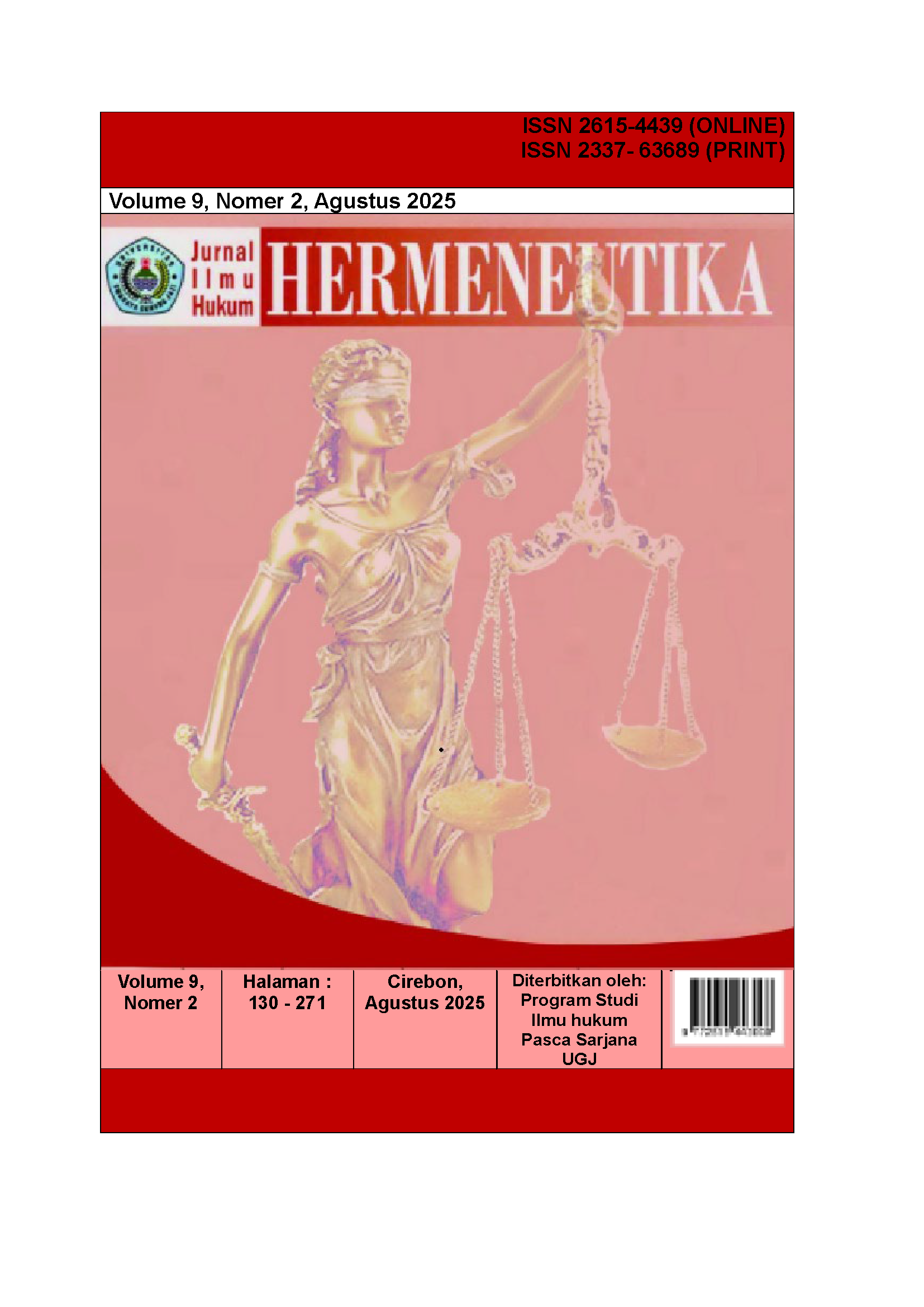LEGAL REVIEW OF MAIN DUTIES AND FUNCTIONS LINMAS IN IMPLEMENTING ORDER PUBLIC
DOI:
https://doi.org/10.33603/hermeneutika.v9i2.10698Keywords:
Legal Studies, Main Duties and Functions, Legal ConsequencesAbstract
The public does not yet know and understand the main duties and functions of Linmas itself, so that when an incident occurs, the public is often confused about whose duties and authority it is. This research aims to determine the main duties and functions of Linmas officers, the legal consequences of violations of the main duties and functions of Linmas officers based on Minister of Home Affairs Regulation Number 26 of 2020 in building community welfare. This type of research is legal research, using qualitative methods, the approach used is normative juridical (normative legal research methods). The normative juridical research approach is a library law research approach carried out by examining library materials or secondary data alone. The conclusion is that the main duties and functions of community protection are regulated in Article 27 of Permendagri No. 26 of 2020, Linmas is tasked with helping to maintain peace, public order and Linmas on the scale of Village/Subdistrict authority; assist in handling peace, public order and security in the implementation of regional head elections and general elections; assist in disaster and fire management and prevention; assisting the security, peace and public order of the community; assisting in the implementation of community development and guidance; assisting in social activities; assist national defense efforts; help secure vital objects; carry out other tasks assigned by the Head of Satlinmas; and assist in handling peace, public order and security in holding Village Head elections. Legal consequences if Linmas members do not carry out their main duties and functions, they will be dismissed as Linmas members, as regulated in Article 25 Paragraph (5) letter f.
References
Arifin, Ayyun, (2015), Implementation of the Duties and Functions of the Community Protection Unit (Satlinmas) in Tani Harapan Village, Loa Janan District, Kutai Kartanegara Regency, Government Science eJournal, 3(2), 2.
Didi Setio Nugroho dan Supardal, (2022), Contribution of the Community Protection Unit in Assisting the Implementation of Peace, Public Order and Community Protection in Sleman Regency, The Journalish: Social And Government, 3(2), 3.
Endang Sutrisno dan Deni Yusup Permana, (2022), Implementation of legal protection for workers in Indonesia in fixed-term work agreements and indefinite-term work agreements according to Law no. 11 of 2020 concerning Job Creation, Responsive Law, 13(2), 84.
Gunawan, (2015) The Role of Community Protection Units in Cilacap Regency, Bina Praja Journal, 7(4), 2-3.
Hamudy, Moh. Ilham A. (2014), Existence of Community Protection Units, Bina Praja Journal, 6(4), 3-4.
Law no. 2 of 2002 concerning the National Police of the Republic of Indonesia.
Law no. 24 of 2007 concerning Disaster Management in Indonesia.
Law Number 23 of 2014 concerning Regional Regulations.
Lestari, Melinda Nurcahya, (2021), Community Protection Unit, Constituent Journal, 3(2), 2.
Minister of Home Affairs Regulation no. 10 of 2009 concerning the Assignment of Community Protection Units in Handling Peace, Order and Security in the Implementation of General Elections.
Minister of Home Affairs Regulation Number 26 of 2020 concerning Linmas.
The 1945 Constitution of the Republic of Indonesia.
Zulfirman, Roni, (2022), Implementation of Outdoor Learning Methods in Improving Student Learning Outcomes in Islamic Religious Education Subjects at MAN 1 Medan, Journal of Research, Education and Teaching, 3(2), 3.
Downloads
Published
Issue
Section
Citation Check
License
Copyright (c) 2025 Gunawan Wibisono, Endang Sutrisno, Sanusi Sanusi

This work is licensed under a Creative Commons Attribution-ShareAlike 4.0 International License.
The Authors submitting a manuscript do so on the understanding that if accepted for publication, copyright of the article shall be assigned to Jurnal HERMENUTIKA, Sekolah Pascasarjana Ilmu Hukum. Universitas Swadaya Gunung Jati as publisher of the journal. Copyright encompasses rights to reproduce and deliver the article in all form and media, including reprints, photographs, microfilms, and any other similar reproductions, as well as translations.
Jurnal HERMENEUTIKA, Universitas Swadaya Gunung Jati and the Editors make every effort to ensure that no wrong or misleading data, opinions or statements be published in the journal. In any way, the contents of the articles and advertisements published in Jurnal HERMENEUTIKA are the sole responsibility of their respective authors and advertisers.










